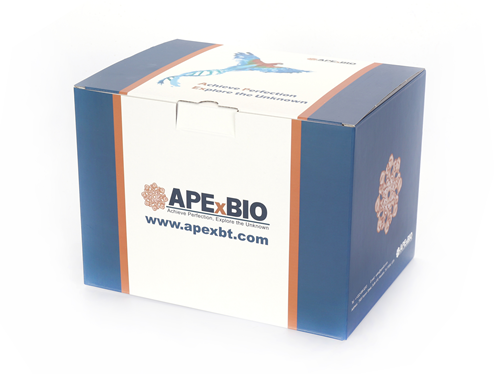Recombinant Human Thrombopoietin/TPO
Thrombopoietin (Tpo), is a key regulator of megakaryocytopoiesis and thrombopoiesis. It is principally produced in the liver and is bound and internalized by the receptor Tpo R/c-mpl. Defects in the Tpo-Tpo R signaling pathway are associated with a variety of platelet disorders [1-3]. The 353 amino acid (aa) human Tpo precursor is cleaved to yield the 332 aa mature protein. Mature human Tpo shares approximately 70% aa sequence homology with mouse and rat Tpo. It is an 80-85 kDa protein that consists of an N-terminal domain with homology to Erythropoietin (Epo) and a C-terminal domain that contains multiple N-linked and O-linked glycosylation sites [4, 5]. Tissue specific alternate splicing of human Tpo generates multiple isoforms with internal deletions, insertions, and/or C-terminal substitutions [6]. Tpo promotes the differentiation, proliferation, and maturation of MK and their progenitors [4, 5, 7]. Several other cytokines can promote these functions as well but only in cooperation with Tpo [8, 9]. Notably, IL-3 independently induces MK development, although its effects are restricted to early in the MK lineage [8, 9]. Tpo additionally promotes platelet production, aggregation, ECM adhesion, and activation [10, 13]. It is cleaved by platelet-derived thrombin following Arg191 within the C-terminal domain and subsequently at other sites upon extended digestion [14]. Full length Tpo and shorter forms circulate in the plasma [4, 5]. The C-terminal domain is not required for binding to Tpo R or inducing MK growth and differentiation [5].
Reference
[1]. Deutsch, V.R. and A. Tomer (2006) Br. J. Haematol. 134:453.
[2]. Kaushansky, K. (2005) J. Clin. Invest. 115:3339.
[3]. Li, J. et al. (1999) Br. J. Haematol. 106:345.
[4]. Bartley, T.D. et al. (1994) Cell 77:1117.
[5]. de Sauvage, F.J. et al. (1994) Nature 369:533.
[6]. Marcucci, R. and M. Romano (2008) Biochim. Biophys. Acta 1782:427.
[7]. Kaushansky, K. et al. (1994) Nature 369:568.
[8]. Kaushansky, K. et al. (1995) Proc. Natl. Acad. Sci. 92:3234.
[9]. Broudy, V.C. et al. (1995), Blood 85:1719.
[10]. Lok, S.I. et al. (1994) Nature 369:565.
[11]. Chen, J. et al. (1995) Blood 86:4054.
[12]. Oda, A. et al. (1996) Blood 87:4664.
[13]. Van Os, E. et al. (2003) Br. J. Haematol. 121:482.
[14]. Kato, T. et al. (1997) Proc. Natl. Acad. Sci. 94:4669.
|
Accession # |
P40225 |
|
Alternate Names |
Megakaryocyte colony-stimulating factor; MGDFC-mpl ligand; MKCSF; THPO; Thrombopoietin; Tpo |
|
Source |
Human embryonic kidney cell, HEK293-derived human Thrombopoietin/Tpo protein |
|
Protein sequence |
Ser22-Gly353 |
|
M.Wt |
52.9 kDa |
|
Appearance |
Solution protein. |
|
Stability & Storage |
Avoid repeated freeze-thaw cycles. It is recommended that the protein be aliquoted for optimal storage. 3 years from date of receipt, -20 to -70 °C as supplied. |
|
Concentration |
0. 2 mg/mL |
|
Formulation |
Dissolved in sterile PBS buffer. |
|
Reconstitution |
We recommend that this vial be briefly centrifuged prior to opening to bring the contents to the bottom. This solution can be diluted into other aqueous buffers. |
|
Biological Activity |
Measured in a cell proliferation assay using MO7e human megakaryocytic leukemic cells. The EC50 for this effect is 0.3-2 ng/mL. |
|
Shipping Condition |
Shipping with dry ice. |
|
Handling |
Centrifuge the vial prior to opening. |
|
Usage |
For Research Use Only! Not to be used in humans. |
Quality Control & DataSheet
- View current batch:
-
Purity > 95%, determined by SDS-PAGE.
- Datasheet
Endotoxin: <0.010 EU per 1 ug of the protein by the LAL method.








